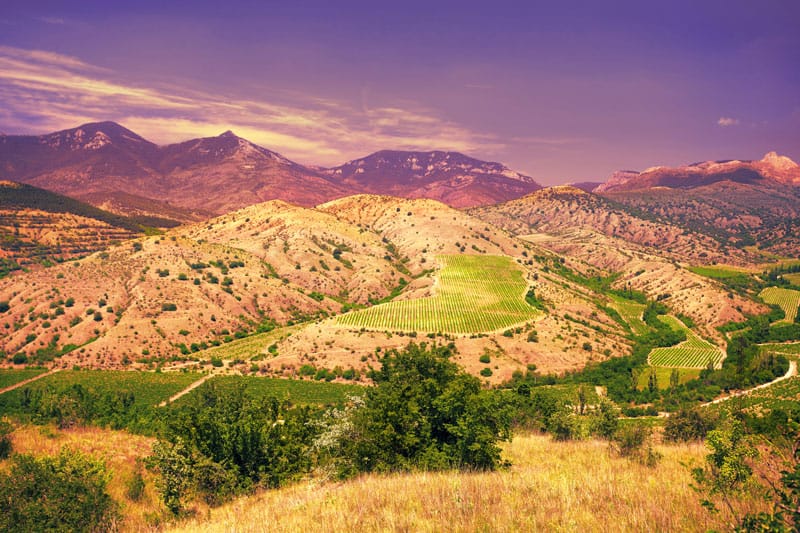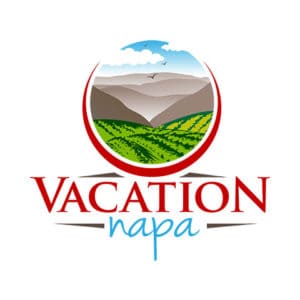
Napa Valley and Sonoma Valley sit side-by-side in Northern California, yet they can feel like two totally different vacations. Napa is compact, polished, and famously Cabernet-forward—think luxe tastings, Michelin-star ambitions, and “reservation recommended” turning into “reservation required.” Sonoma is broader and more choose-your-own-adventure: more driving options, more styles of wine, and (often) a more relaxed, come-as-you-are energy.
So… which is better: Napa or Sonoma? Honestly, neither—it depends on what you want from your wine country getaway.
And yes, both regions are extremely popular. Napa Valley tourism research reports about 3.7 million visitors to Napa Valley, while Sonoma County tourism reporting shows 10.2 million visitors in 2022—so together, you’re looking at well over 10 million visitors in a typical year.
The “right” choice comes down to these 5 things
Before you pick Napa vs. Sonoma, get clear on:
- Transportation: driving comfort, tours, walkability, traffic tolerance
- Accommodations: boutique luxury vs. cozy value (and how far you want to be from tastings)
- Food & dining: splurge meals vs. farm-to-table casual
- Wineries you’re excited about: specific producers, varietals, and tasting styles
- Total cost: tastings + transportation + lodging + meals (it adds up fast)
Napa vs. Sonoma at a glance
Choose Napa Valley if you want…
- A luxury-first wine country vibe (sleek tasting rooms, curated hospitality)
- Big-name Cabernet Sauvignon and classic Napa Chardonnay
- A smaller footprint with easier “one area per day” planning
- Bucket-list dining (hello, Yountville)
Choose Sonoma Valley / Sonoma County if you want…
- A laid-back, spacious feel with tons of variety (wine + coast + redwoods + towns)
- More varietal diversity (Pinot Noir, Zinfandel, sparkling, Chardonnay, blends, etc.)
- More flexibility (more walk-ins and casual experiences, depending on sub-region)
- Often slightly lower tasting and lodging costs, especially outside peak weekends
Transportation: getting around (and how easy it feels)
Napa Valley
Napa is easier to “cluster” because it’s more compact—especially along Highway 29 and the Silverado Trail. If you want a special-occasion ride, the Napa Valley Wine Train is still operating and runs multiple experiences and schedules. Napa Valley Wine Train
Popular ways to get around Napa:
- Private driver / car service (most convenient for multiple tastings)
- Small-group wine tours
- Rideshare (works best around Napa, Yountville, St. Helena—less reliable deep in the valley)
- Wine Train (a structured day with a set route and onboard experience)
Reality check: traffic is real on weekends and during harvest. Napa’s popularity is part of the magic… and part of the congestion.
Sonoma Valley / Sonoma County
Sonoma is bigger and more spread out. That’s great for exploring (and escaping crowds), but it can mean more time behind the wheel—especially if you’re bouncing between areas like Sonoma Plaza, Russian River Valley, Dry Creek, and the Coast.
Upsides:
- Less “main corridor” congestion than Napa in many areas
- More scenic routes and day-trip possibilities
- More variety beyond wine (coast, hikes, small towns)
Tradeoff:
- You’ll want a plan so you’re not driving 60–90 minutes between tastings without realizing it.
Accommodations: where to stay (and what it typically costs)
Napa Valley
Napa is known for beautiful resorts, high-end boutique hotels, and polished B&Bs. If you’re staying in or near Yountville, St. Helena, or downtown Napa, you’ll be close to a lot of tasting action—but you’ll usually pay for that convenience.
Sonoma Valley / Sonoma County
Sonoma has everything from charming inns to modern resorts, plus glamping and quieter stays tucked into vineyard areas. You can often find strong value if you’re flexible on location (and you don’t need to be “right on Highway 29,” because Sonoma doesn’t revolve around one highway in the same way).
Food & dining: Napa is flashy, Sonoma is soulful (and both are delicious)
Napa Valley
Napa’s food scene is legendary, from elevated farm-to-table to true destination dining. La Toque is still open (and still a favorite for a special night out). La Toque
Downtown Napa’s Oxbow Public Market is also open and remains one of the easiest “everyone wins” stops for groups with mixed cravings. Oxbow Public Market
And yes, The French Laundry is still open and taking reservations.
One update: the Silverado Cooking School has closed (it’s no longer offering classes or events). Silverado Cooking School
If you want a cooking-class-style experience in Napa now, CIA at Copia is a great alternative and continues to offer cooking and beverage classes. CIA Foodies
Sonoma Valley / Sonoma County
Sonoma is full of memorable meals—from Sonoma Plaza favorites to roadside gems and coastal seafood. If you’re visiting the Francis Ford Coppola Winery area, the winery itself remains open for visits and experiences.
For a scenic dinner on the coast, Bay View Restaurant & Lounge at The Inn at the Tides (Bodega Bay) is also operating. Inn At The Tides
Wine & tastings: what you’ll pay and what you’ll taste
Napa Valley AVA
Napa’s reputation for premium hospitality is well-earned—and pricing often reflects it. Industry coverage in 2025 notes the rising average tasting costs in Napa, with standard tastings and reserve experiences frequently landing in premium territory. Wine Enthusiast
That said, there are still curated lists of tastings under $50 if you plan ahead. Visit Napa Valley
Napa is especially known for:
- Cabernet Sauvignon (Oakville, Rutherford, Stags Leap District and more)
- Merlot and Bordeaux blends
- Rich, often oaked Chardonnay (plus plenty of modern, fresher styles too)
Notable Napa winery visits mentioned in your original draft are still operating for visits/info:
- ZD Wines (visit info active; open daily by appointment) ZD Wines
- Robert Sinskey Vineyards (visit info active) Robert Sinskey Vineyards & Wilding Farm
- Frog’s Leap (visit info and open hours posted) Frog’s Leap Winery
- Conn Creek (active website/visitor presence) Conn Creek Winery
Sonoma Valley AVA (and the wider Sonoma County playground)
Sonoma’s biggest advantage is range. Depending on where you go, you’ll find:
- Bright, mineral Chardonnay (especially cooler-climate areas)
- Pinot Noir hot spots (Russian River Valley is a classic)
- Zinfandel and old-vine styles (Dry Creek and beyond)
- Sparkling (hello, Korbel)
Notable Sonoma producers from your list that are still operating with visit info:
- Cline Family Cellars (visit info active) clinecellars.com
- Francis Ford Coppola Winery (visit info active) Francis Ford Coppola Winery
- Korbel (tastings and tours info posted) Korbel California Champagne
Cost-saving tips that work in both Napa and Sonoma
If both regions feel pricey—good news: you can absolutely do wine country on a budget(ish).
- Go Thursday–Sunday? Expect peak pricing. Consider Mon–Thu for better availability and calmer roads.
- Book one “splurge” tasting per day and balance it with a casual flight elsewhere.
- Use a wine tour bus or group tour if you don’t want to juggle reservations and driving.
- Eat one big “destination meal,” then keep the rest casual (markets, bakeries, picnic stops).
- Stay just outside the hottest zones (you’ll often save significantly and only add a short drive).
Resources to plan your trip (without opening 47 tabs)
- Visit Napa Valley is great for current planning info and curated guides. Visit Napa Valley
- For Sonoma, county tourism resources and regional winery sites help you pick sub-regions with intention. Sonoma County Tourism
- Review platforms (Tripadvisor, etc.) are helpful for recent traveler notes—just cross-check hours and reservation policies on official sites.
How to get your wine home (without heartbreak)
This is the classic “how did we end up with 18 bottles?” moment.
Your best options:
- Ship from the winery (most can help, but shipping rules vary by state and weather)
- Fly with wine in a proper shipper or protective case (ask your airline about limits/fees)
- Consolidate bottles: many tasting rooms can help you combine purchases into fewer boxes
Pro tip: tell your host your plan before you buy big. They’ll often package accordingly.
Final take: you don’t have to pick just one
If it’s your first wine country trip and you want that iconic “wow” factor, Napa can feel like a greatest-hits album. If you want a more flexible, exploratory trip with lots of styles and side adventures, Sonoma is pure joy.
And if you can swing it? Do a split trip:
- 2 days Napa (Cabernet + bucket-list dining)
- 1–2 days Sonoma (Pinot, Zinfandel, coast time, and a slower pace)
At Vacation-Napa, we specialize in providing expert advice and insights on the best wine country destinations. Our team of experienced travel enthusiasts has firsthand knowledge of Napa and Sonoma, ensuring you receive reliable and trustworthy information for planning your dream vacation.
